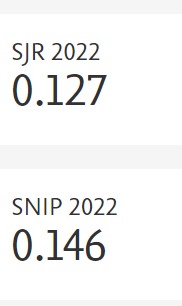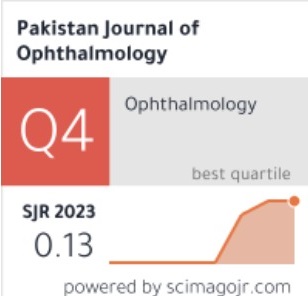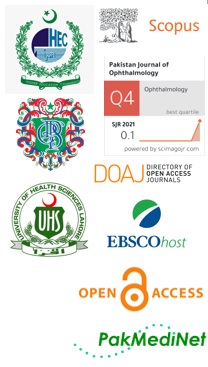Ocular Surface Changes in patients with Type 2 Diabetes Mellitus: Evidence from Palestine
Doi: 10.36351/pjo.v41i3.2020
DOI:
https://doi.org/10.36351/pjo.v41i3.2020Abstract
Purpose: To determine the ocular surface disease in patients with Type 2 diabetes mellitus (DM) by using translated and validated Arabic version of Ocular Surface Disease Index (Arab-OSDI) and the clinical measurements.
Study Design: Cross-sectional study.
Methods: A total of 30 patients with Type 2DM and 30 non-diabetic controls were included in this study. All participants, who were non-contact lens users, completed the Arab-OSDI questionnaire and underwent clinical evaluations including tear break-up time (BUT), meibomian gland assessments, tear meniscus height (TMH), Marx line (ML), Schirmer II tear test, fluorescein corneal staining (F/S), and lissamine green conjunctival staining (LGS) were recruited. Dry eye (DE) was diagnosed when Arab-OSDI scores were ≥13 and BUT was <5 seconds.
Results: The DM and non-DM groups demonstrated notable differences in the outcomes of Arab-OSDI (p = 0.017) and the evaluations of meibomian gland (p = 0.022). Within the DM group, individuals with dry eye showed significantly elevated Arab-OSDI results compared to those without dry eye (p = 0.014), whereas the other clinical parameters showed no statistically significant differences.
Conclusion: Individuals with Type-2 DM may experience damage to the lacrimal functional unit, leading to tear deficiency or evaporative DE. This altered tear composition may increase DE symptoms, as reflected in elevated Arab-OSDI scores.
Keywords: Ocular surface disease, Diabetes Mellitus, Ocular surface disease index.

Downloads
Published
How to Cite
Issue
Section
License
Copyright (c) 2025 Dr. Aljarousha, Dr.Osman, Dr.Badarudin, Dr.Che Azemin, Dr.Abdul Rahim, Dr.Mahmud

This work is licensed under a Creative Commons Attribution-NonCommercial 4.0 International License.






